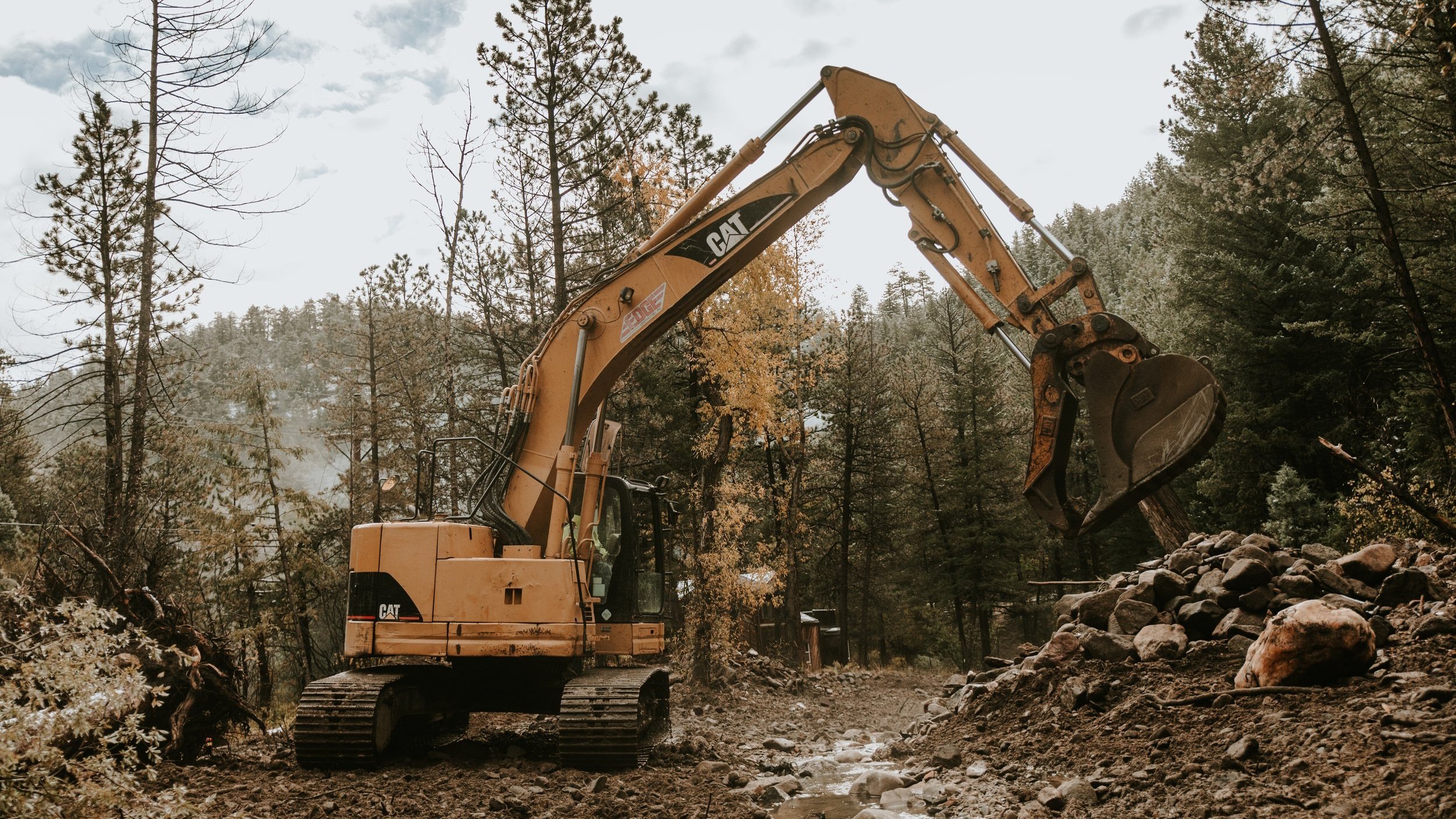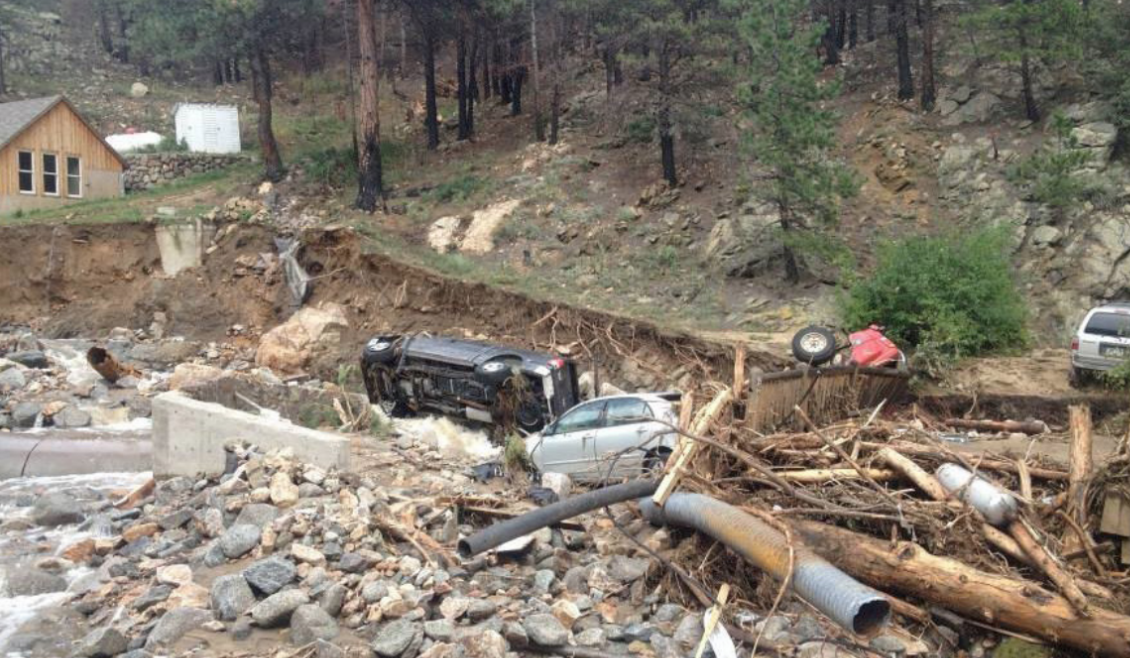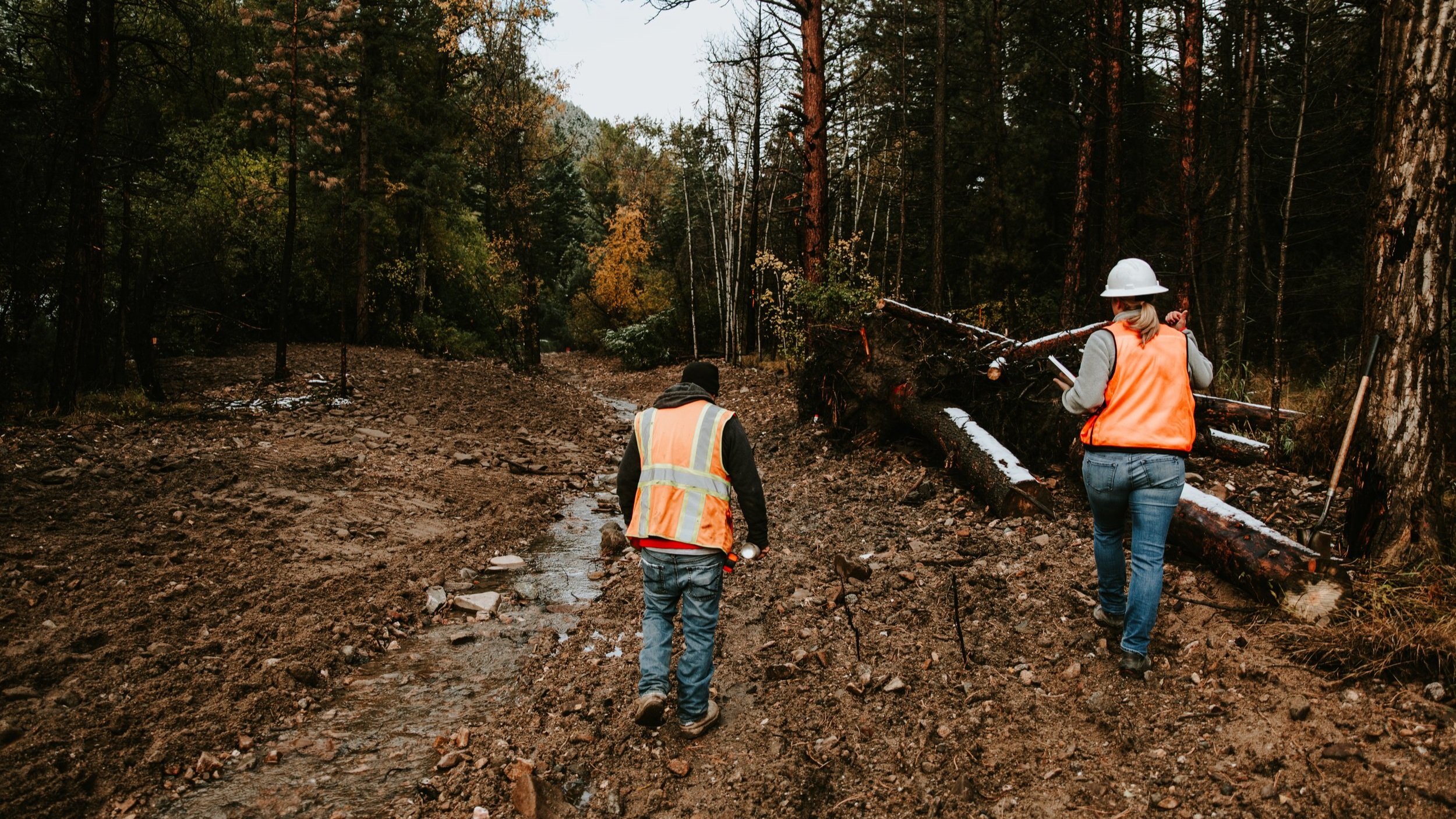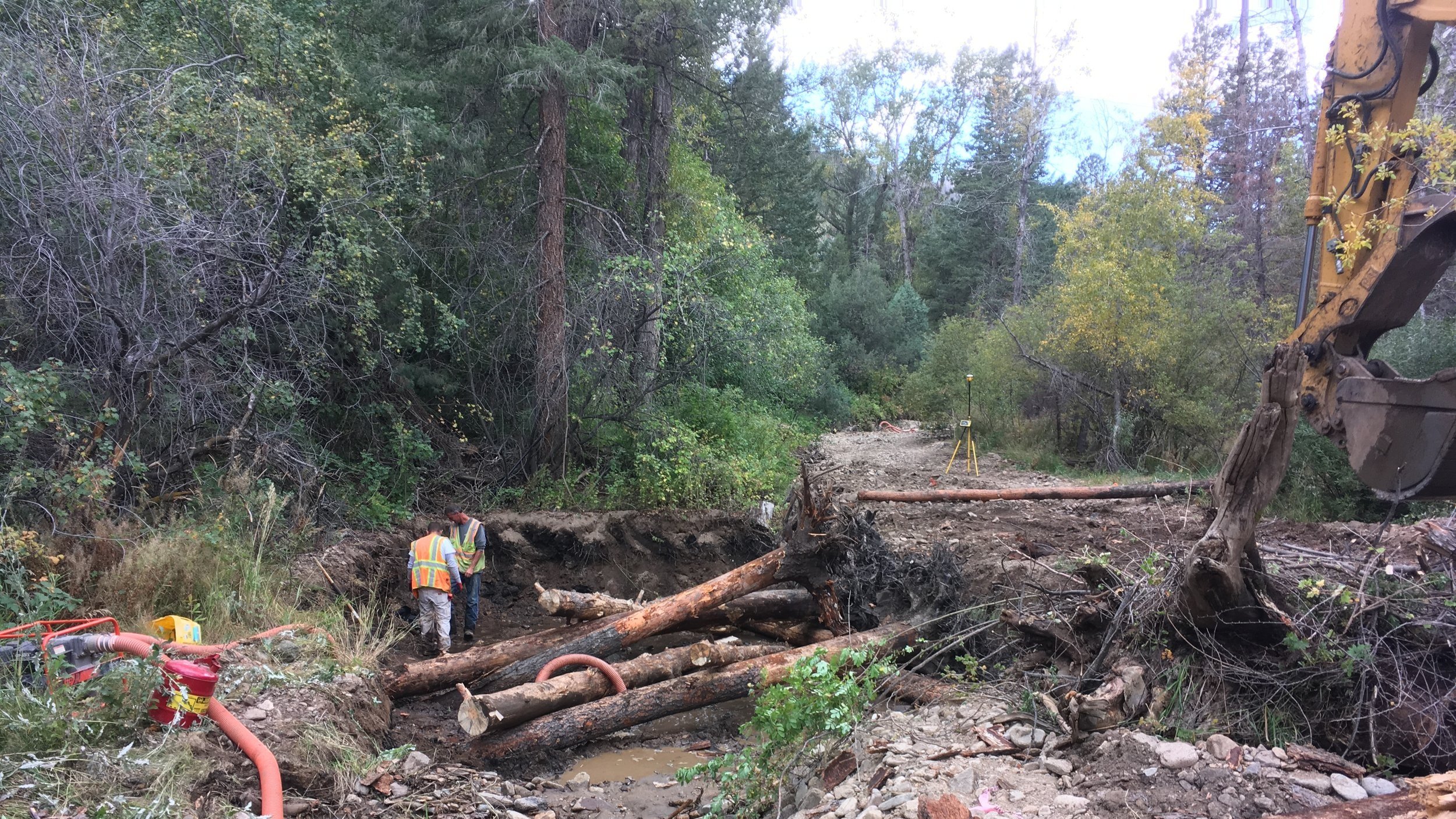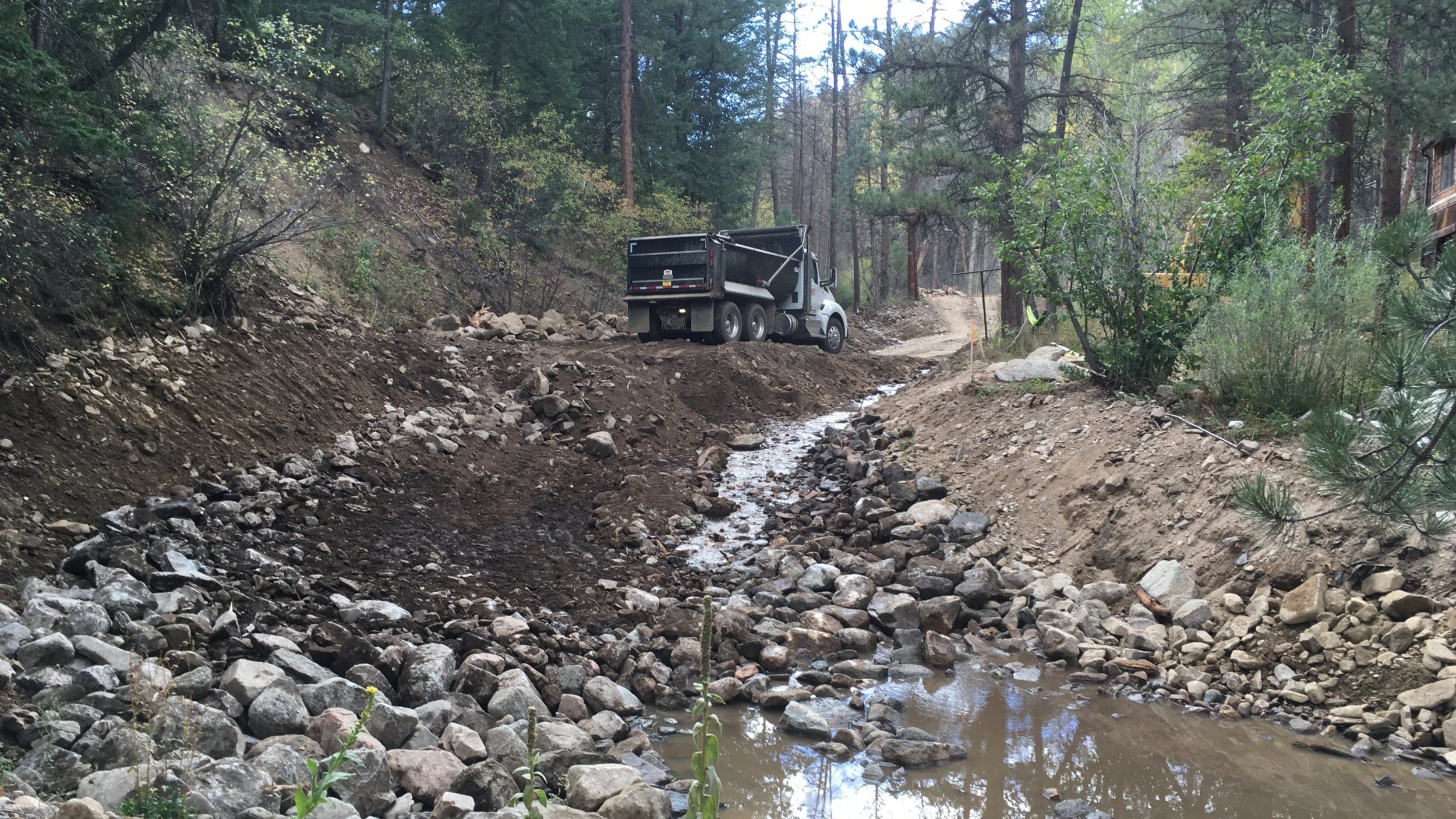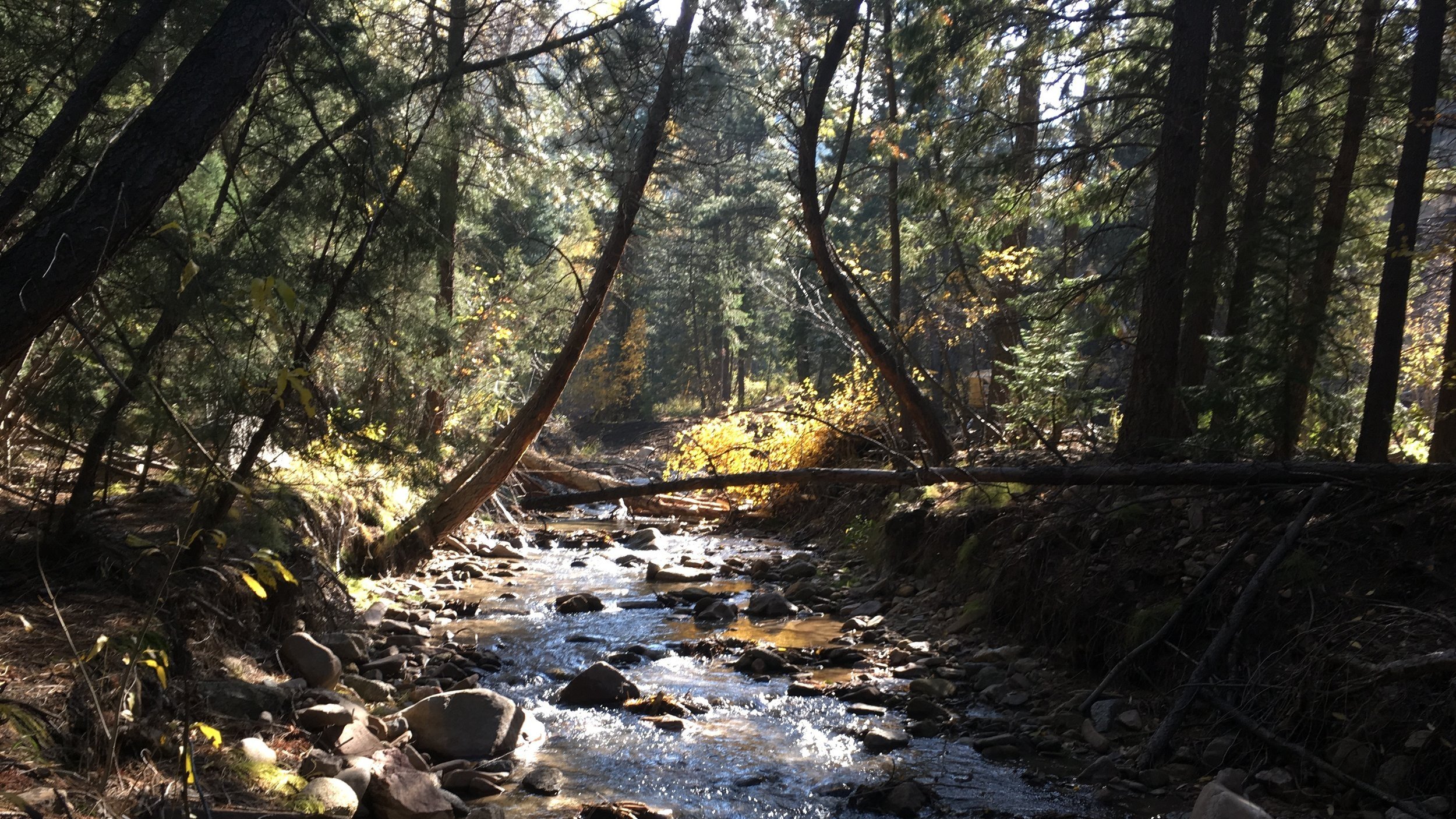Wall Street Flood Resilience
The Wall Street community and surrounding Upper Fourmile Creek Watershed have experienced a sequence of compounding disasters in the last decade. In 2010, the Fourmile Canyon Fire burned 23 percent of the watershed, destroyed more than 160 homes, and left the watershed vulnerable to flooding.
Typical summer thunderstorms over the burned area in 2011 and 2012 produced flash floods that transported a significant amount of sediment and debris into the creek corridor, plugging culverts and reducing the channel capacity. The following year, the September 2013 flood unleashed 13-18 inches of rain over the wildfire’s burn scar, inundating the canyon with floodwaters, sediment, and debris.
The flood destroyed local roads and homes built within the active creek corridor, and washed out every crossing in the Wall Street neighborhood. Some residents were stranded due to impassable roads and had to hike to a nearby ridge and await helicopter evacuation.
The Wall Street project was built to mitigate flood damage in the watershed by removing sediment and debris from the channel and floodplain. The project attempted to give the river room to adjust and protect assets at the margins of an active corridor to the greatest extent possible.
In select locations where bank protection was necessary, the project stabilized eroding and failing streambanks with several different types of bioengineering treatments, consisting of combinations of rock and plant materials. All treatments were installed in conjunction with live willow plants.
The Wall Street project revegetated nearly four acres of land in the creek corridor. Disturbed areas were stabilized with native plants that will provide multiple benefits as they establish.
PROJECT GOALS
REMOVE SEDIMENT
Increase the capacity of the creek corridor to convey future floodwaters, and provide storage locations for future sediment pulses.
STABILIZE STREAMBANKS, STREAMBEDS, AND FLOODPLAINS
Protect against damage to homes and infrastructure
RESTORE STREAMBED DISCHARGE CAPACITY
Give the river room to adjust and protect assets at the margins of an active corridor to the greatest extent possible.
REMOVE FLOOD DEBRIS AND TRASH
ESTABLISH VEGETATIVE COVER
Protect critically eroding land
IMPROVE WATER QUALITY
By reducing sediment from bank erosion
ENRICH RIPARIAN HABITAT
Via the addition of topsoil, seeding, and native vegetation
ENHANCE AQUATIC HABITAT
Through increased complexity, vegetation, and water quality
“This reach is looking outstanding! Cascades and pools are functioning really well and the campsite seems to be thriving again...Thank you for bringing this project to life and making it successful. Job well done! ”
— Joe Juergensen, Project Manager

